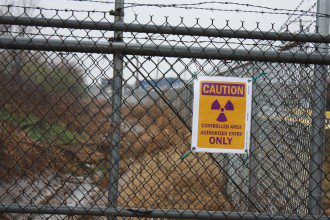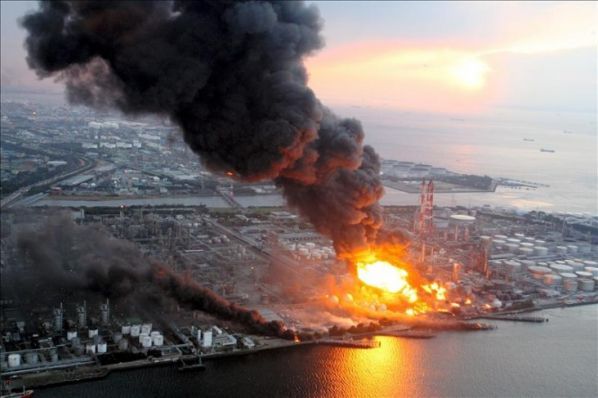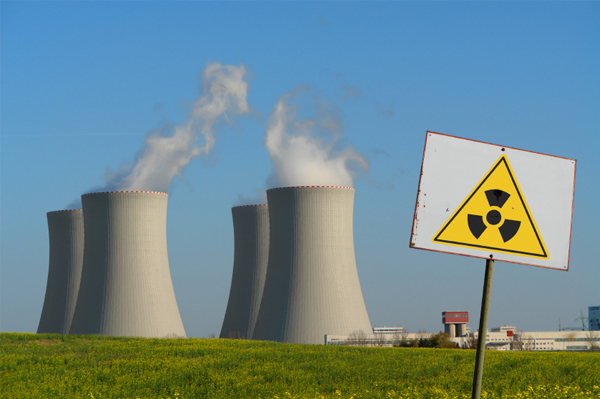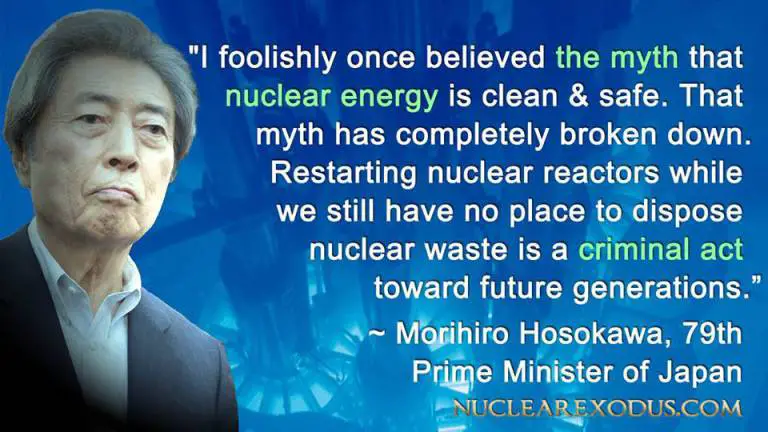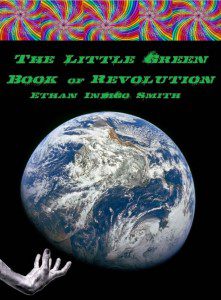Contributing writer for Wake Up World
The nuclear energy and weaponry industries are signs the military-industrial complex is running at white hot. The inherent dangers of the nuclear experiment are the same ones that President Dwight D. Eisenhower warned us all about in his famous exit speech on 17 January, 1961 when he said: “We must guard against the acquisition of unwarranted influence, either sought or unsought, by the military industrial complex. The potential for the disastrous rise of misplaced powers exists, and will persist. We must never let the weight of this combination endanger our liberties or democratic processes. We should take nothing for granted.”
But today, despite this warning, the nuclear experimentation industry is still shrouded in scientific and political secrecy, undermining our liberties and democratic processes and risking our health and our very existence in the process. When it all goes wrong — and history shows us this outcome is inevitable — the environmental destruction both of nuclear accidents and planned detonations is global, and permanent.
[pro_ad_display_adzone id=”110028″]
Year 70 of A Million Year Waste Cycle
There are 23 reactors in the United States, and more in other nations of the same design as the reactor that went sky-high in Fukushima. Although the official stance of the industry is that the GE-designed reactor design was not to blame for the ongoing Fukushima disaster, based on its track record it is apparent that the nuclear industry does not have the knowledge to properly assess and mitigate all the risks involved in their experiment — and it is an experiment — nor to safely manage the resulting nuclear waste for even 70 years of the one million years it takes to break down.
Legal and political logic constantly distorts the truth, by way of what information is considered and what is omitted in order to present an “acceptable” understanding. These tactics are imperial and traditional in flavor and practically always underhandedly done by crooked individuals on behalf of crooked institutions. Institutions omit and expound on limited sets of information so as to ‘validate’ their point and promote their schematic.
Explains Andreas Toupadakis, Ph.D, a scientist who resigned from a classified government position maintaining nuclear weaponry on moral grounds to become an educator and peace activist:
It is easy for biased advocates of nuclear power to confuse the public using scientific rhetoric. It is this powerful and immoral tool that the advocates (high paid technocrats) of “the peaceful atom” have been using all these years, and as a result, the public knows virtually nothing about the science of radiation and nuclear materials. But the public maintains common sense, which most of the time is absent from the “experts.” Despite decades of evidence that proves the damage of nuclear radiation, the Nuclear Regulatory Commission (NRC) has continued to downplay both the emitted levels and health effects of radiation exposure on public health…
Recently, the advocates of nuclear energy have been presenting to the people a deceiving choice between nuclear power and global warming. It is basically a form of extortion by the nuclear establishment towards the people… The alternatives of solar power, wind power, geo-thermal power and conservation are just a few of the safe, non-polluting answers to our energy problem but they are methodologically ignored or undermined… Forward thinking nations such as Denmark are already generating 140% of their electricity needs from wind power alone. So why is the US government still advocating for nuclear energy? [source]
When it comes to opposing the skewed logic that supports nuclear experimentation in particular (and oligarchical conventions in general), the most effective approach is to re-open the scope of discussion, encompassing and including larger fields of information than they would like to confront and essentially stifling their reductionist jargon with inarguable observations — in this case, being only 70 years into a million year waste cycle, we are no closer to solving the problem of mounting nuclear waste generated by these continuing programs while being more capable of producing energy in ways that are not destructive. Much like the mounting US financial debt, the problem of unmanageable nuclear waste will also be passed on to future generations to deal with.
What many people don’t consider is that nuclear power plants are just one point of the nuclear waste cycle. Once waste is removed from a nuclear power facility, the disposal and storage of waste still remains a major unresolved issue. The waste is either stored on site or buried underground in facilities that time is proving are incapable of containing radioactive waste for more than a few years. For example, the populations in regions where radioactive waste is stored, such as Savannah River and Yucca Mountain (at which millions of gallons of high-level nuclear waste is stored in 49 leaking tanks), are equally as susceptible to diseases caused by radiation exposure (cancers and thyroid disorders are particularly prevalent) as those communities near active nuclear power plants.
Proving again that the nuclear industry is attempting to contain the uncontainable, just last month the Beatty radioactive waste facility in a rural Nevada county caught fire, again, releasing bursts of white smoke from several explosions of nuclear material:
State emergency management chief Caleb Cage and Fire Marshal Peter Mulvihill said the fire burned unabated after starting Sunday during intense thunderstorms and flash flooding in the area…
Judy Treichel, a longtime opponent of a federal proposal to entomb the nation’s most radioactive material at Yucca Mountain in Nevada, compared the fire near Beatty with incidents that led to EPA Superfund designation for a site that accepted low-level radioactive waste in the 1960s and 1970s at Maxey Flats, Kentucky.
A report from The Guardian elaborates on the conditions at the Beatty facility:
The operator of a closed radioactive waste dump that caught fire in southern Nevada last weekend was troubled over the years by leaky shipments and oversight so lax that employees took contaminated tools and building materials home, according to state and federal records…
Former US senator Richard Bryan, a Democrat who was governor from 1983 to 1989, remembers “an ongoing series of problems” at the Beatty site, including several episodes involving leaking trucks…
In 1979, the then Nevada governor Robert List ordered the Beatty low-level waste facility shut down and launched an investigation after a radioactive cargo fire on a truck parked on US Highway 95, at the facility gate…
In 2010, US Ecology was fined nearly $500,000 by the US EPA at its hazardous industrial waste recycling and disposal plant after inspectors found leaky containers and operating logs showing smoke emissions containing hazardous wastes had been improperly vented in 2008. Inspectors also found poor record-keeping.
Isolating nuclear waste has also proven more difficult than regulators and operators care to admit. Just last year, radioactive was found to be leaking from another storage facility at Bridgeton, Missouri, contaminating a non-nuclear landfill that – in a common theme – caught fire.
Preliminary tests by the U.S. Environmental Protection Agency have found radioactive waste closer to the underground fire at the Bridgeton Landfill than previously thought…Radioactive waste was supposed to be confined to “Operable Unit 1” in the West Lake Landfill, but preliminary tests have detected it in the Bridgeton Landfill, labeled “Former Active Sanitary Landfill”… That would put the waste outside the limits of the West Lake Landfill, which is part of the radioactive Superfund site under EPA oversight.
Radiological disasters like Fukushima, Hanford, like the disaster looming in Missouri and around the world, are like radiological ovens – the closer you are to it the hotter you become, but the heat radiates out in all directions. According to what we know there are several leaking storage tanks at Hanford, and three loose reactor cores at Fukushima. And who knows what happened to fuel pools at Reactors 1 and 2? It’s too hot to go there. And Reactor 3, well that was MOX fuel, or plutonium.
In 2014, an underground explosion (touted as impossible) at New Mexico’s Waste Isolation Pilot Plant (‘Pilot’ meaning experimental and ‘Isolation’ now being a misnomer of wishful thinking) released americium and plutonium into the atmosphere above ground. The underground facility was meant to be able to store nuclear waste for up to 10,000 years (only 1% of the time it takes to break down) but lasted only 16 of operation before its first disaster, with several hundred above-ground workers testing positive to radiation exposure, and airborne radiation detected several miles away.
Said Ryan Flynn, New Mexico’s Environment Secretary: “Events like this simply should never occur… one event is far too many.” But the reality is, they do inevitably happen, just as we have seen Chalk River (Canada), Windscale (UK), Hanford (Washington), South Ural Mountains (Russia), Three-Mile Island (Pennsylvania), Chernobyl (Ukraine), Rocky Flats (Colorado) and Tokaimura (Japan) and Fukushima (Japan). And now the St Louis region is threatened by ignition of waste stored next to the Mississippi River.
While nuclear power generation, nuclear fuel creation, and waste storage facilities clearly pose a danger, it is also important people realize that nuclear power and nuclear arms programs are inherently intertwined. When nuclear reactors produce electricity, they also produce plutonium, which is used to make nuclear bombs. In addition to the contamination caused by nuclear power generation, weapons development programs also create untold contamination, which the industry is unable to properly manage. In fact, in 2000, the National Academy of Sciences reported that most of the sites on which the US government has built nuclear bombs will never be cleaned up enough to allow public access to the land. Ever.
How many more regions of Earth Mother shall we allow to be poisoned and abandoned in the name of nuclear experimentation? Why do we accept the claims of nuclear advocates that nuclear energy is truly a sustainable energy system, when it is clearly not the case? Should we call ‘right’ what is so wrong because it is passively accepted by a society that is so busy with everyday life that it has no time to think deeply about its consequences?
Distracted and Misdirected
Just the fact we accept nuclear experimentation and its destructive consequences to the entirety of creation is proof we are collectively distracted, and misdirected. Simple logic shows us the devastating danger of the nuclear experiment, without the need to delve into the infinite complexity of the whole process.
We are now in year 70 of nuclear experimentation, since the first nuclear detonations in 1945, one in New Mexico (where indigenous people used to live) and two in Hiroshima and Nagasak that killed and maimed hundreds of thousands of people instantly. As of July 2015, 30 countries worldwide are operating 438 nuclear reactors for electricity generation and 67 new nuclear plants are under construction in 15 countries. There are thousands of nuclear missiles at the ready, hundreds of open pits for both mining and waste storage, and unknown hundreds of sites working on building nuclear weaponry. To date there have been over 2,000 known nuclear detonations, three meltdowns at Fukushima, meltdowns at Chernobyl and Three Mile Island, multiple meltdowns at Santa Susana in sunny Southern California, an ongoing disasters in Hanford and WIPP.
But that is just a list of the disasters we know about. In 2006 it was revealed that a partial meltdown occurred in 1959 at the Boeing-Rocketdyne (Santa Susana) nuclear testing facility northwest of Los Angeles. Although locals were led to believe that there were no serious releases of radioactivity, this accident is now known to have released the third highest amount of radioactive iodine of any disaster in nuclear history. This story was not made public until a class-action suit was filed (and won) against Boeing by local residents who complained of nuclear-related cancers and thyroid abnormalities caused by their proximity to the facility.
And let’s not forget less obvious sources of environmental contamination, such as the nuclear WWII warship that was recovered from the ocean near the Farallon Islands off the San Francisco coast earlier this year.
Disturbingly, as far as the nuclear industry is concerned, environmental contamination, aging reactors and failing short-term storage infrastructures are just business as usual. For this reason, nuclear experimentation can be considered nothing but biological fascism; endangering countless lives for the benefit of the ruling few, it is the conjoining of corporate fantasies with pursuits in military might that causes us all to pay biologically and environmentally for their “progress”. With sustainable energy alternatives suppressed in favor of nuclear power, and none but the elite profiting from the horrors of nuclear war, our situation becomes clear — we have sustainable energy technologies, the problem is the oligarchy. And when we consider the biological damage that all life on our dear Earth Mother has suffered from the nuclear era, including our own biological make-up and those yet unborn into an increasingly irradiated environment, it is clear — all beings alive today and all life henceforth must deal with the consequences of increasing nuclear pollution, and unless we stand up and speak up, it will not only increase but become too much. History has shown us that, as long as nuclear experimentation continues, another major meltdown will inevitably occur in the near future, destroying another culture and devastating another region.
Personally Speaking…
I take nuclear experimentation personally. Biologically speaking, we all do actually, in the sense that everyone of us, our environment, our fellow life-forms and our food supply, has been negatively altered by nuclear experimentation. We all have Chernobyl and Fukushima radioactive elements in our bodies, in our soil, air, water and food. But I take this issue personally because of my personal experience. I lived near a number of different nuclear power plants as a youth, including Maine Yankee nuclear experiment and Indian Point nuclear experiment. I remember one 4th of July when my aunt and uncle were debating whether the siren going off at Maine Yankee, which blazed for at least fifteen minutes, meant that there was a meltdown or that the boys at the power plant were having a couple of cold ones and firing off the sirens to celebrate. Needless to say, being a kid growing up under the shadow of nuclear power plant, you become thankful July Fourth is only once a year.
Right around the same time I was going to school in Peekskill, New York, another town in earshot of the 12 o’clock noon siren test at the Indian Point facility. There was a well known leak, as far as leaks go, at that facility that took place at the same time I went with Mr. Debenedictus’s fourth grade class trip to the experiment, but the leak was secret at the time. Because this leak was kept secret, as the industry so often does, my fourth grade class was invited to visit the failing nuclear experiment when there was a leak in progress. So I take it personally: like so many other innocent folks, I too was endangered by the failings and coverups of the nuclear industry.
At any rate, when discussing the issue of nuclear experimentation with those who don’t understand the dangers, I use the Maine Yankee and Indian Point sites as examples, because they indisputably illustrate the dangers of nuclear power generation experiments.
The Maine Yankee experiment is now closed and the waste has nowhere to go, is not stored properly and should have been removed to long term storage facilities, according to operating agreements, years ago. Like all the nuclear power sites in the U.S.A., both decommissioned and still in operation, the spent fuel rests precariously on site, in unsafe short term storage. And since the storage experiment at the Waste Isolation Pilot Plant in New Mexico failed, there is nowhere to move any of this waste and no plan for its disposal whatsoever.
As for Indian Point, it is one of the oldest nuclear power generation experiments still in operation in the world, and is the same GE design as the archaic reactors at Fukushima 1. In my mind, this site represents the epitome of what is wrong with operating nuclear power generation experiments: if something goes wrong, as it did in Fukushima, millions of Americans will potentially be harmed.
And, yes, I take that personally.
Educate to Legislate
Every human without a dark heart (or cesium-induced holes in their brain) sees the dangers and asks, ‘What can I do?’ And as the looming darkness of nuclear destruction comes to light, we often experience a period of futility, when the machine appears to be too big to stop. But in a cultural state of separation and disempowerment, we forget the power of our numbers; that we are the 99.9999999999999999999%
For this reason, one of the best things we can all do is educate and inspire other humans, and appeal to their compassionate hearts to take action against those deadly systems of the military industrial complex and the fascists who profit from them — while life on Earth today and tomorrow suffers at their expense.
As President Eisenhower so accurately described: “We must not fail to comprehend its grave implications… Only an alert and knowledgeable citizen can compel the proper meshing of the huge industrial and military machinery of defense, with our peaceful methods and goals. So that security and liberty may prosper, together.”
Yet, beyond this general approach of educating the collective, change can be created by understanding and using the very system that protects it, and benefits from, the influence of the military industrial complex.
A Memorial Bill is a House Bill that is presented to the state legislature. In the U.S.A., anyone can present Memorial Bills to the House of Representative/Delegates in their state. And the bill can be whatever you want it to be. The main requirement of Memorial Bills is you have to get state representatives and/or senators to sponsor it, which means you have to play inside their box, and play by their rules. And, with information and tenacity and just the memorial relationship, these can be used to demand that the nuclear time-bombs that operate in your state are closed, and that they effectively manage the radioactive waste following their shutdown.
The following points are either useful for a Memorial Bill or, if you cannot put together a Memorial Bill in response to the local nuclear experiment in your region, consider these to be talking points for educating critically thinking beings.
Why End The Nuclear Experiment?
- Because of the ongoing disasters at WIPP, Hanford and Fukushima 1, because all the industrial professionals said that such circumstances could never occur and yet they did, because they failed to have the foresight not to question these potentials, nor plan for them and because of what is at stake, that is more and more regions of the nation and planet being too radioactively contaminated to support life or healthy living, because of the further unanticipated and ongoing dilemmas at the waste sites that continue to be regional threats, and again because of the track record of unforeseen and unconsidered circumstances coming to reality we demand that nuclear experimentation be ceased and the waste properly store the waste into HOSS facilities, preferably somewhere contaminated already, preferably not right on he coast, where it can be monitored properly instead of being a constant threat to our people, groundwater, livelihood and ecology in total.
- Because two designers of these reactors stated that they were prone to accidents and quit there jobs with GE over disagreements about the reactor design. This reactor design is the same as two of three of the reactors that suffered triple meltouts in Fukushima forever destroying regions of Japan.
- Because, unknowns aside, what we do know about Fukushima is tragic enough to dictate immediate international action and closure of all nuclear power generation experiments worldwide. Still uncontained over 4 years after the initial meltdown, a report in May 2015 revealed that “containers holding contaminated water at the crippled Fukushima nuclear power plant are at risk of hydrogen explosions, with 10 percent of them found to be leaking. As many as 333 containers may be defective, according to TEPCO.”
- Because the failures of the nuclear industry directly threaten life, liberty the pursuit of happiness, and their effects are not limited by borders or legislative jurisdictions. International incidents have negatively impacted the United States, some of which involved American corporate engineering.
- Because each nuclear experiment built merely provides power to small areas and yet risks destroying entire regions and damaging ecosystems for periods of time far beyond human comprehension. Geomagnetic solar storms could cause power outages and shutdowns of all major electrical infrastructure, threatening the safety of nuclear power experiments in multiple ways — mainly because they are all designed to require the input of outside energy sources, despite producing energy themselves. Go figure.
- Because only recently including an earthquake shook the Eastern Seaboard that was stronger than predicted and nearly caused a meltdown in Virginia that we are aware of. And because nuclear power experimentation require everything to work out exactly as predicted, yet is dependent on aging infrastructure, changing environmental conditions (tsunamis, earthquakes), external power sources and a whole crew of humans who must never make mistakes. Case in point is the ongoing question of the New Madrid earthquake faultline, where numerous nuclear power experiments reside.
- Because of the nuclear industry’s history of deception and ‘downplaying’ the seriousness of its failings, and the corruption of nuclear regulation which enables it to continue regardless.
- Because we are dealing with complex realities about which the accident prone nuclear industry is basically clueless, and which become more complicated and dangerous as incidents progress. When accidents occur those who tout the virtues of nuclear experimentation are commonly heard to say, ‘we didn’t think that could happen’, proving the experiment too complex and too risky to continue in unforeseen ignorance. We know enough to know we don’t know enough to continue.
Storage Solutions
The need for vastly improved nuclear waste storage is succinctly described by the Nuclear Information and Resource Service:
Principles for Safeguarding Nuclear Waste at Reactors
The following principles are based on the urgent need to protect the public from the threats posed by the current vulnerable storage of commercial irradiated fuel. The United States does not currently have a national policy for the permanent storage of high-level nuclear waste. The Obama administration has determined that the Yucca Mountain site, which has been mired in bad science and mismanagement, is not an option for geologic storage of nuclear waste. Unfortunately, reprocessing proponents have used this opportunity to promote reprocessing as the solution for managing our nuclear waste. Contrary to their claims, however, reprocessing is extremely expensive, highly polluting, and a proliferation threat, and will actually complicate the management of irradiated fuel. Nor will reprocessing obviate the need for, or “save space” in, a geologic repository…
Having spent many years researching and reporting on problems and solutions relating to the nuclear industry, and corresponding with numerous other anti-nuclear activists, I believe the best short-term solution for managing the nuclear materials that already exist comes in the way of HOSS, or hardened on-site storage. Why this was never utilized in the first place is a whole other rabbit hole.
Hardened on-site storage involves storing radioactive waste as safely as possible as close to the site of generation as possible, thereby reducing the number of sites contaminated. Transporting waste to off-site storage should only be done if the reactor site is unsuitable for a HOSS facility and transporting it increases its safety and security, for example, if radioactive material is dry-stored above ground in a flood-risk area. HOSS facilities are not a permanent waste solution, however, and the waste must be both retrievable (ie. not buried deep underground) and able to be monitored for early detection of radiation leaks and/or overheating.
In the long term, further research on natural geological conditions that retard the movement of radionuclides must also be undertaken, to increase the effectiveness of long-term storage and reduce the risk of leaks from stored radioactive waste materials.
I should point out, however, that my support for improving the storage mechanisms of radioactive waste is due to concerns over public safety and in no way indicates my support for the continuation of nuclear power or the production of more nuclear waste. But realistically, HOSS is more favorable than the current industry standard, which is simply burying radioactive waste and hoping for the best, often with disastrous consequences — like at the failed WIPP experiment. Burying it reminds me of what a criminal would do to cover his tracks, or a guilt stricken adolescent perhaps.
The overarching truth of the nuclear industry is that, each time an unexpected disaster occurs, the industry learns something new and devastating at our expense, making nuclear experimentation the single most dangerous scientific experiment in human history. Then, following each new failure, we hear a resounding chorus of ‘we didn’t think that could happen’ from short-sighted nuclear advocates. In fact, that is exactly what was said about the WIPP disaster currently unfolding in New Mexico. Following the initial radiation leak in 2014, which reached the city of Carlsbad, Russell Hardy, director of the Carlsbad Environmental Monitoring and Research Center stated “We don’t know what happened inside that might have caused a release. We don’t know why it happened and we don’t know whether it could happen again.”
And therein lies the problem. By claiming to be victims of the unexpected, nuclear advocates are attempting to placate themselves, and us, and prolonging their denial about the extreme dangers they are undertaking. But by their own words they reveal their faulty reasoning: they genuinely don’t know enough to operate nuclear systems with the assurance of safety, proving that humanity should not be going forward with more nuclear experiments but decommissioning them altogether. Realistically the nuclear industry does not and cannot adequately foresee and mitigate all the variable risk factors inherent in nuclear operations – as history has shown – nor does it have the integrity to admit the full extent of the problem. It is therefore illogical that nuclear advocates rationalize its continuation.
Nuclear experimentation is truly a Pandora’s Box, lighting fires that burn forever. Mired by a history of cancer, coverups and contamination, and full of hidden surprises that cannot be contained, we’re only now beginning to count the cost. The only thing we know for sure is that the million year radioactive waste cycle needs to be acknowledged and addressed today so that we don’t blindly pass on this problem to future generations tomorrow.
The Little Green Book of Revolution
By Ethan Indigo Smith:
‘The Little Green Book of Revolution’ is an inspirational book based on ideas of peaceful revolution, historical activism and caring for the Earth like Native Americans.
A pro-individual and anti-institutional look at the history of peaceful proactive revolution, it explores the environmental destruction inherent to our present energy distribution systems and offers ideas to counter the oligarchical institutions of the failing ‘New World Order’.
‘The Little Green Book of Revolution’ is available here on Amazon.
About the author:
Activist, author and Tai Chi teacher Ethan Indigo Smith was born on a farm in Maine and lived in Manhattan for a number of years before migrating west to Mendocino, California. Ethan’s work is both deeply connected and extremely insightful, blending philosophy, politics, activism, spirituality, meditation and a unique sense of humor.
You can connect with Ethan on Facebook, check out his author page on Amazon, or visit his websites, Geometry Of Energy and Meditation 108, where Ethan offers lessons on individuation, meditation, the conceptualization of energy, and the metaphysical significance of 108.
Ethan’s publications include:
- The Complete Patriot’s Guide to Oligarchical Collectivism, an insightful exploration of history, philosophy and contemporary politics.
- The Little Green Book of Revolution an inspirational book based on ideas of peaceful revolution, historical activism and caring for the Earth like Native Americans.
- The Matrix of Four, The Philosophy of the Duality of Polarity on the subject of the development of individual consciousness.
- The controversial book, Terra-ist Letters, a work that humorously contrasts two very serious issues: the prohibition of marijuana and the promotion of nuclear experimentation.
Recommended articles by Ethan Indigo Smith:
- The Common Origin of Religions and Theology
- Mutually Agreed Peace: Ending The Doctrine of Perpetual War
- The 5 Tibetan Rites of Rejuvenation: 108 Movements to a Meditative Mind State
- Idiots, Zealots, Elitists and Patriots: The Four “Wise Monkeys” of Modern Society
- Marijuana Prohibition and The Suppression of The Divine Feminine
- Meditation 108: A Guide to Meditating for the Infant Practitioner
- A Little Green Revolution: the Rainbow Warriors will Heal the Earth Mother
- Why Governments Promote Deadly Nuclear Energy and Ban Beneficial Hemp
- Hate: The Ultimate Social Control Mechanism
- Guardians of the Earth Unite! American Indian Prophecy, The Medicine Wheel, and The Four Sacred Directions
- Walls and Wars – Overcoming the Instincts of Hive Consciousness
[pro_ad_display_adzone id=”110027″]

